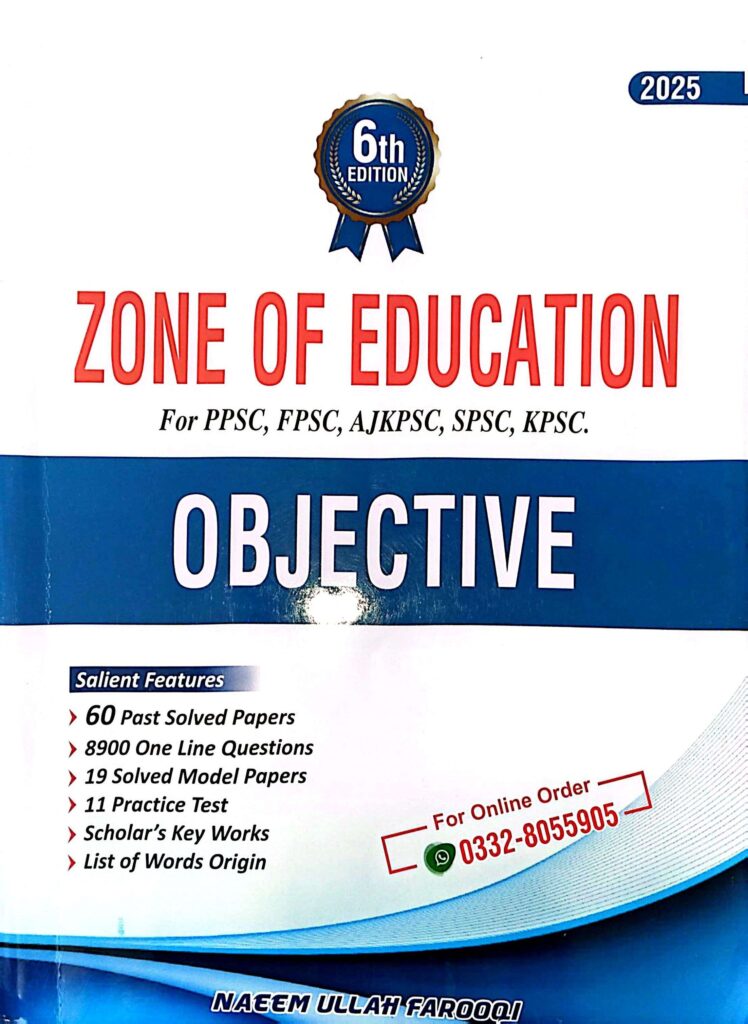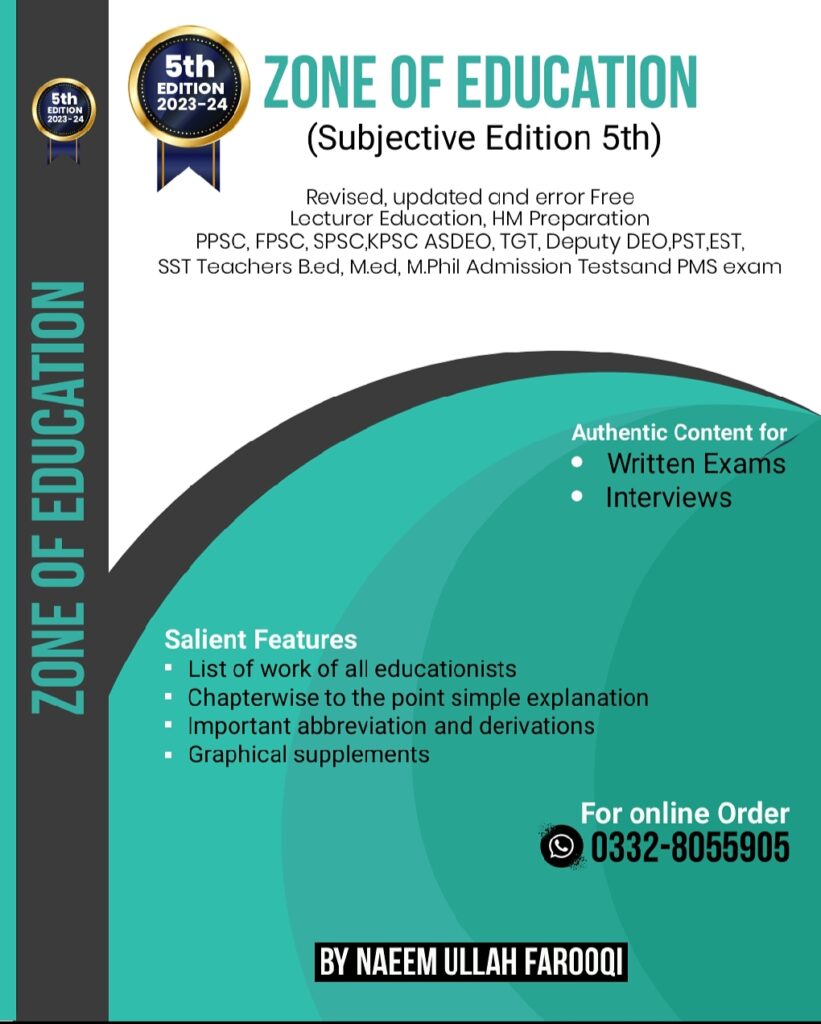GENERAL METHODS OF TEACHING
Lesson Plan
1. A small unit or units of the subject matter which a teacher plans to teach in a definite period is
(a) lesson plan
(b) micro-teaching
(c) diagnostic testing
(d) remedial teaching
2. Lesson plan is
(a) acquisition of information
(b) small unit/units of the subject-matter which a teacher teaches in a definite period
(c) the task of preparing students for future
(d) improvement of teaching-learning
3. The teacher of every school should prepare a lesson plan for
(a) 5 or 10 to 15 minutes
(b) 30 or 35 to 50 minutes
(c) 1 to 2 hours
(d) 2 to 3 hours
4. The development of lesson planning occurred as a result of
(a) Behaviorism
(b) Functionalism
(c) Psychoanalysis
(d) Gestalt psychology
5. Lesson planning means
(a) development of skill
(b) habit formation
(c) that detailed description which a teacher completes in a definite period
(d) practice and experience
6. In preparing lesson plans, the teacher presents new knowledge as the basis of
(a) his achievement
(b) pupil’s health status
(c) principles of teaching
(d) previous knowledge of the pupils
7. In a lesson plan,
(a) the subject-matter becomes limited
(b) objectives cannot be fixed
(c) the teacher’s and pupil’s activities cannot be pre-decided according to the class level
(d) the teaching strategies cannot be decided beforehand
8. While preparing a lesson plan,
(a) the learner should divide the topic in one or more units
(b) the learner should point out the teacher’s weaknesses
(c) the teacher should divide the topic in one or more units
(d) the teacher should point out the learner’s weaknesses
9. In order to create attraction and interest in the lesson,
(a) the teacher is occupied with students’ problems
(b) the teacher is free to make changes in the lesson plan
(c) the learner decides what strategies and instruments to be used
(d) the learner evaluates the teaching tactics and techniques used by the teacher
10. The teacher should write a lesson plan in detail
(a) in the classroom
(b) while giving a presentation
(c) after final examinations
(d) before commencing the task of teaching
11. A scaled down teaching encounter in class size and time is known as
(a) micro-teaching
(b) lesson plan
(c) remedial teaching
(d) diagnostic testing
12. Micro-teaching is a
(a) devise
(b) method
(c) scaled down teaching
(d) law
13. A systematic training to provide feedback to teacher-trainee for the modification of teacher behavior is
(a) remedial teaching
(b) diagnostic testing
(c) micro-teaching
(d) lesson planning
14. The aim of micro-teaching is
(a) to create simulated situations
(b) to strengthen educational institutions (c) to modify student behavior
(d) to modify teacher behavior
15. In micro-teaching, a pupil-teacher teaches a short lesson to
(a) large group of pupils
(b) small group of pupils
(c) the whole school students
(d) the school administrators
16. Micro-teaching is a scaled down teaching encounter to reduce the duration of period of
(a) 5 to 10 minutes
(b) 30 to 50 minutes
(c) 1 to 2 hours
(d) (d) 2 to 3 hours
17. Micro-teaching as a training technique involves three phases. They are
(a) knowledge acquisition, skill acquisition and transfer
(b) preparation, orientation and selection
(c) presentation, observation and discussion
(d) re-planning, re-teaching and evaluation
18. In micro-teaching, the student-teacher plans a short lesson in which he can
(a) learn a new skill
(b) develop a new opinion
(c) acquire a new knowledge
(d) practice a particular skill
19. A micro-teaching cycle used to practice a teaching skill consists of
(a) teaching, planning, feedback
(b) planning, feedback, teaching
(c) planning, teaching, feedback
(d) teaching, feedback, planning
20. Micro-teaching can control the practice by
(a) knowledge acquisition
(b) observation
(c) feedback
(d) orientation
21. A diagnostic test is a tool used by teachers
(a) to identify students with special needs only
(b) to give information to the students
(c) to prepare extra classes for examination
(d) to evaluate students’ prior knowledge of a particular subject
22. Diagnostic testing is usually done
(a) after the end of the school year
(b) before the start of a new unit of study
(c) before giving assignments to the students
(d) after finishing final examination
23. The purpose of diagnostic testing is
(a) to motivate the student
(b) to find out the particular problem faced by the student
(c) to make the student understand the subject matter
(d) to control the behavior of the student
24. Diagnostic tests help teachers diagnose the needs of the students
(a) to meet their instruction needs
(b) to pass in their examinations
(c) to retain whatever is learnt
(d) to survive
25. Diagnostic tests are those which help the teacher
(a) to improve his teaching skill
(b) to measure the achievement of the student
(c) to know the family background of the student
(d) to know the particular strength and weakness of the student
26. A test which is designed to reveal specific weakness or failures to learn in some subject of study is known as
(a) achievement test
(b) attainment test
(c) prognostic test
(d) diagnostic test
27. A diagnostic test is useful if a teacher uses it
(a) every month
(b) once throughout the school year
(c) more than once throughout the school year
(d) every week
28. Diagnostic tests are also known as
(a) analytical tests
(b) attainment tests
(c) achievement tests
(d) prognostic tests
29. A diagnostic test measures where a student is in terms of his
(a) habit
(b) knowledge and skills
(c) physical fitness
(d) attitude
30. A diagnostic test should identify
(a) the school curriculum
(b) teacher efficacy
(c) next steps for the pupil
(d) teacher competency
JOIN ZONE OF EDUCATIONPK!
Discover the most comprehensive and reliable pedagogy resources in Pakistan, curated for competitive exam success. Our content covers all competitive exam MCQs, including PPSC, FPSC, AJKPSC, SPSC, and more. Designed to empower learners with top-notch material and insights, trust us for your preparation journey!


